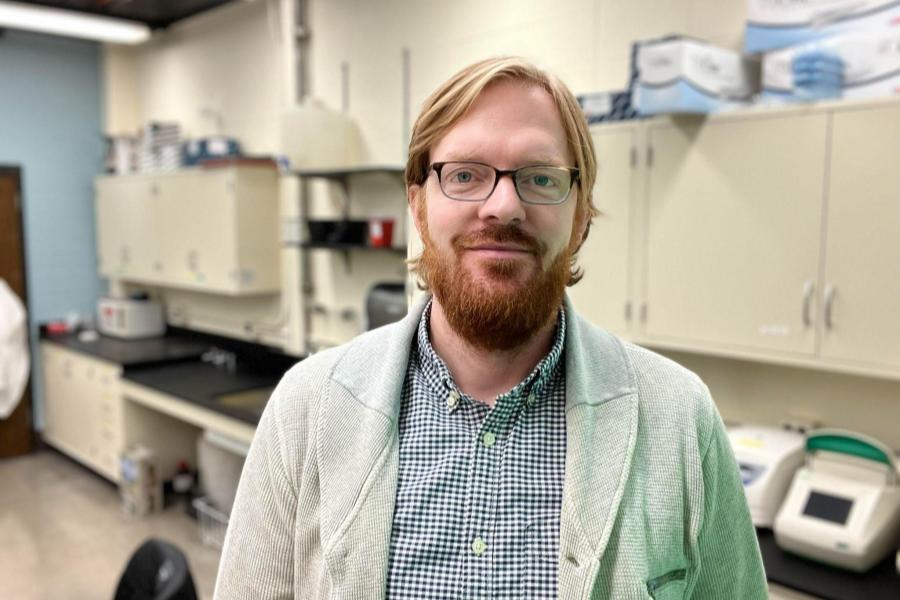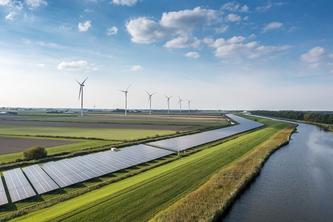
MINNEAPOLIS/ST. PAUL (05/02/2022) — Minnesota’s Fishing Opener is on May 14 this year and the spread of aquatic invasive species (AIS) is a top concern for many as anglers and boaters return to the lakes this spring and summer.
Nick Phelps, Ph.D., with the Minnesota Aquatic Invasive Species Research Center at the University of Minnesota, answers questions about the steps you can take to help stop the spread of aquatic invasive species and what researchers are currently doing to make a difference.
Q: What are aquatic invasive species and why are they a problem?
Aquatic invasive species are plants, animals and harmful microbes that were introduced by humans, became established and spread, and cause — or are likely to cause — negative impacts to the ecosystem, economy or human health. Problematic invaders have re-engineered our ecosystems, caused massive economic impacts and changed the way we use and enjoy our lakes, rivers and wetlands. While not all change is bad, there are very few examples where AIS introductions have been good.
Q: What aquatic invasive species are in Minnesota?
In Minnesota, there are invasive fish, such as common carp and invasive bigheaded carps; invasive plants such as Eurasian watermilfoil and starry stonewort; invasive invertebrates such as zebra mussels and spiny water flea; and invasive microbes. Unfortunately, the list of AIS already in Minnesota is long and there are many more on the doorstep. However, it is important to remember that only about seven percent of Minnesota’s lakes are on the DNR’s infested waters list and less than three percent of Minnesota’s lakes are infested with zebra mussels. This is not a lost cause — there is still a lot to protect.
Q: What steps can I take to help stop the spread?
“Clean-Drain-Dispose” isn’t only best practice for prevention, it is also the law in Minnesota. The research shows that doing these few simple steps when your boat or equipment leaves a waterbody — infested or not — can make a major difference. If possible, it is also a good idea to dry your boat and equipment for several days in between visiting lakes to be sure no viable AIS can be spread. In addition, I’d suggest joining the hundreds of citizen scientists in Minnesota who are part of our AIS Detectors program. This is a great opportunity to get actively involved and make a difference in your community.
Q: What do you anticipate will be the biggest challenges related to AIS this year?
Aquatic invasive species continue to surprise us – new species, new locations, new pathways and new impacts – all of which will challenge us in 2022. These challenges exist from the end of the dock to the State Capital. However, we must continue to think beyond the challenges of today and work towards tomorrow’s solutions by creating new tools, insights and strategies. Research and management are taking steps in the right direction, which are leading to big wins. I am seeing progress every day! Despite the challenges, there are plenty of reasons to be optimistic about our future.
Q: What is the University of Minnesota doing about AIS?
The Minnesota Aquatic Invasive Species Research Center at the University of Minnesota is on the leading edge of AIS research. We are working hard to develop an in-depth understanding of the biology and ecology of AIS — and the complex systems in which they live — to find vulnerabilities and weaknesses that can be efficiently and effectively targeted for prevention, control and management. Throughout the research process, we partner closely with managers, practitioners and the public to ensure our tools and results are translated into action. We are seeing success stories across Minnesota and more are within reach! You can learn more about our work and how you can get involved at www.MAISRC.umn.edu.
Nick Phelps, Ph.D., is an associate professor in the Department of Fisheries, Wildlife and Conservation Biology and the director of the Minnesota Aquatic Invasive Species Research Center. His areas of expertise include aquatic invasive species, fish health and risk-based management.
-30-
About the College of Food, Agricultural and Natural Resource Sciences
The University of Minnesota’s College of Food, Agricultural and Natural Resource Sciences (CFANS) strives to inspire minds, nourish people, and sustainably enhance the natural environment. CFANS has a legacy of innovation, bringing discoveries to life through science and educating the next generation of leaders. Every day, students, faculty, and researchers use science to address the grand challenges of the world today and in the future. CFANS offers an unparalleled expanse of experiential learning opportunities for students and the community, with 12 academic departments, 10 research and outreach centers across the state, the Minnesota Landscape Arboretum, the Bell Museum of Natural History, and dozens of interdisciplinary centers.
About “Talking...with U of M”
“Talking...with U of M” is a resource whereby University of Minnesota faculty answer questions on current and other topics of general interest. Feel free to republish this content. If you would like to schedule an interview with the faculty member or have topics you’d like the University of Minnesota to explore for future “Talking...with U of M,” please contact University Public Relations at [email protected].
- Categories:
- Agriculture and Environment





